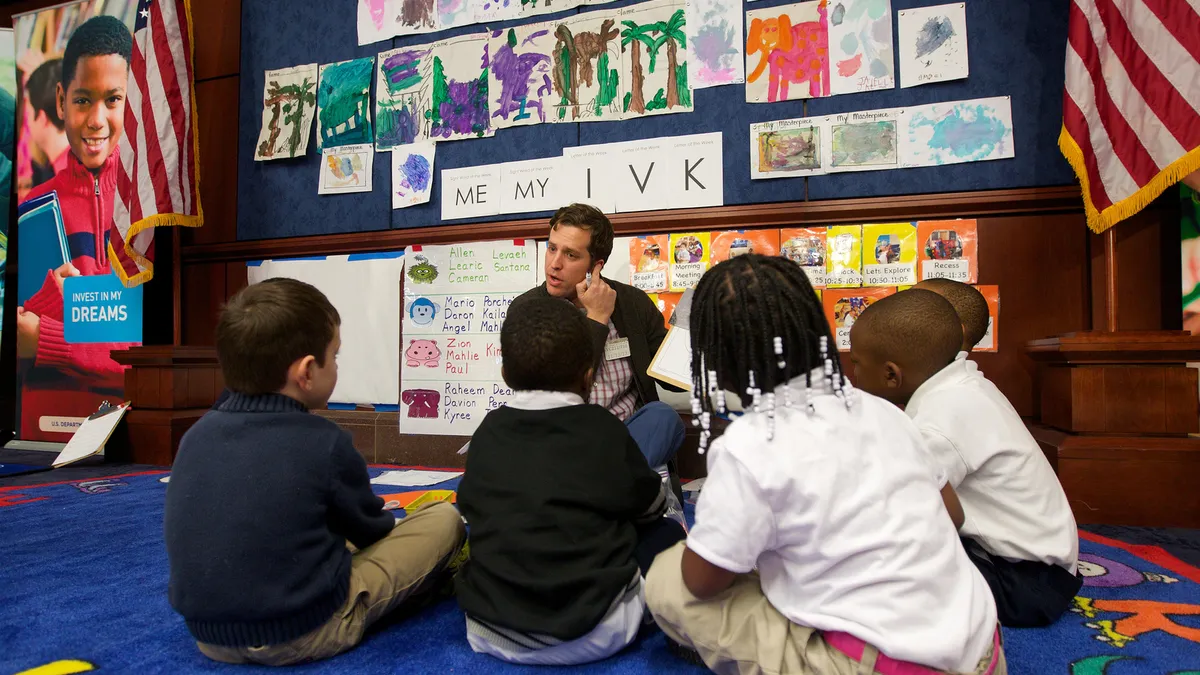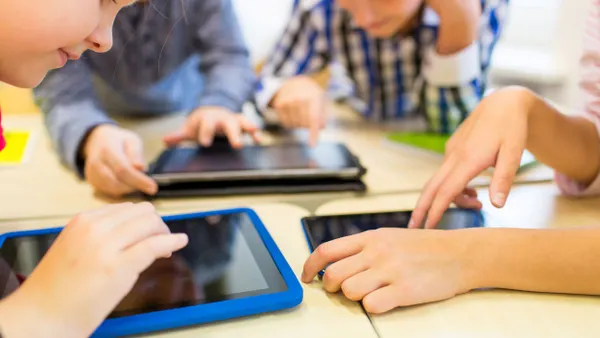Dive Brief:
- Pennsylvania’s Neshaminy School District targets struggling students in kindergarten, first and second grade for a 30-minute-per-day reading intervention that embraces a blended learning model.
- Reading specialists in the district write for eSchool News that the program first teaches students to decode, pulling them out of independent work time daily to master one or two skills per week.
- On top of this intervention, students spend at least one hour per week using digital Discovery software to continue their practice with lessons, vocabulary, games and decodable text.
Dive Insight:
The first few years of school, students learn to read, but by third grade they are expected to start reading to learn. When students are behind in third grade, their reading skills deficit starts to create deficits in other areas that compound year over year. Low-income students are particularly vulnerable to falling behind because of summer learning loss. While students from higher-income families generally return to school in the fall without having lost any ground in reading, or having made slight gains, students from low-income families can return to school with up to three months of learning loss.
Researchers find that by the end of fifth grade, students from low-income families are as much as two-and-a-half years behind. Like Discovery, LightSail is another program that aims to combat this summer slide, giving students access to engaging reading practice while they’re out of school so they don’t show up behind.







 Dive Awards
Dive Awards







